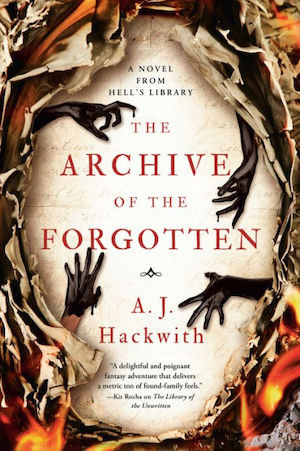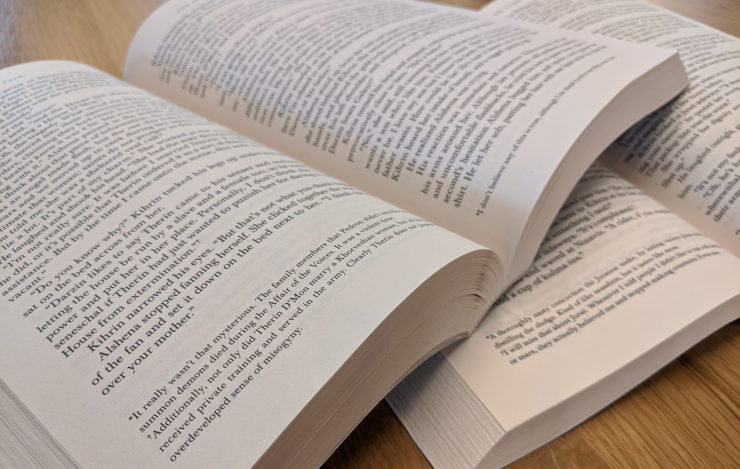It’s an uncertain night in early November after the American election, and I find myself checking for footnotes. Yes, footnotes. I reach for footnotes, marginalia when things are uncertain. It’s a habitual hold over from my days in grad school. I used to think footnotes were there to provide clarity. Further citation, a reference to a clarifying source, see here for authority, credibility.
Credibility sounds awfully appealing right now.
We learned about the truth this year, just as I learned with footnotes years ago, it all depends on your sources. You can state anything in the primary text if you cite a persuasive source or personality to back it up. Or even better, cite nothing at all! Just do it with authoritative style.
Footnotes, like any text, can lie. They can twist the original statement, change the story. Maybe that’s why I love to see their versatile use in fiction. The use of marginalia, footnotes, quotes and citations of fictional sources as a narrative tool delights me as a reader. To explain a world building concept without slowing down the action, or to provide a winking commentary to the reader. But it’s more than that. Know why I love those little squiggly bits of text, stuck in the disreputable borderlands of the pages?
It’s where the untold stories play out.
When I was in college, I had a minor obsession with House of Leaves, an experimental novel about a malicious mystery house by Mark Z. Danielewski. Although I found the book’s treatment of women unsatisfactory, it was the first time I encountered a book that broke the expectations and norms of a traditional book-reader relationship. It’s frequently cited as a primary example of ergodic literature, an early precursor to cybertext or interactive narratives. With text that loops, jumbles, and sometimes dances sideways up the page, House of Leaves was not meant to be read from beginning to end, no, House of Leaves requires you to interact with it. It’s a book that was meant to be played.
The primary text of the book was actually the fictional and incomplete scholarly manuscript discovered by one of the book’s narrators, Johnny Truant. The manuscript appears to be an unfinished scholarly study of a documentary film, adding another layer of meta-narrative to the story. There are various narrators in the documents, footnotes, and appendixes of House of Leaves, but the bulk of the page tells one story—this film that documents a the homeowners of a house that is larger on the outside than in the inside; while the marginalia tells another. Johnny’s story, his twisted harrowing experience with the manuscript as he tries to discern the truth, existed entirely in the footnotes, the margins, and the way the primary text degraded and morphed on the page.
I was hooked, but something was still missing. The primary character of the book’s fictional ‘documentary’ was what one would expect: a cishet white guy who is misunderstood by his wife and family. He was the subject of this documentary, caught up in this layered fable, only by accident. Perhaps part of the intended horror of House of Leaves was the idea of living in margins and footnotes. To not be the primary text, to not be the hero. His horror was the prospect of our reality.
It struck a chord in me the way the worst kind of revelations do. The primary text of most works felt incomplete and hostile to me: so white, so male, so barbed with Campbellian thorns. I feel at home in the margins more than anywhere else.
Maybe you do, too.
I read more, I read better. I read Terry Pratchett, where footnotes are used for truth telling, a sly wink to the reader behind the character’s backs. I read Rachel Caine, whose recent death left us all lesser for it. Her use of letters and codex entries in The Great Library series tells the story of a world larger than its characters. I read Jenn Lyons, who’s entire delightful The Ruin of Kings, the first book of her A Chorus of Dragons series, is a book-inside a transcript-inside a report, obliterating the presumed primary text entirely.
“It is my hope that if you possess as complete a picture as possible of these events that led up to these matters, you will show leniency regarding the Lord Heir,” Thurvishar D’Lorus says in a letter to the Emperor that makes up opening page of The Ruin of Kings, “the Council members who are recommending charges of treason and a death sentence surely do not have the whole story.”
A complete picture, a whole story. Thurvishar seems charmingly optimistic by today’s standards.
Buy the Book


The Archive of the Forgotten
The problem is, as The Ruin of Kings shows, no story is whole. There’s always an underlying tension, a story that’s not being told. But here’s where Lyons deviates brilliantly from Danielewski, the margins—the voice of the margins, Thurshivar in the first book Ruin of Kings, is an active player. He’s not an enterprising outsider seeking to translate a hidden text, to cut a story from its context and elevate it with the dissection of academia. His footnotes relinquish nothing. He’s part of the story, and indeed plays as one of the main points of view in the following books. Footnotes and marginalia are, at their core, an act of credibility and power: who has it. Who is primary, and who is the dissenting voice.
Sarah Gailey’s short story published in Fireside Magazine, “STET”, is worth a read for the glorious exploration of that tension: the conflict of the story and the characters exist entirely in the footnotes. STET reads as a short excerpt of scholarly paper in the midst of a peer review, a standard part of the academic rigor process. But the real story, told in the peer comments and author corrections, is charged with tension and personal grief. The author of the paper, “Anna” isn’t just writing a paper on “Autonomous Conscience and Automotive Casualty”, she’s grieving the loss of her daughter to an ‘accident’ involving an AI-driven car. The reader slowly learns of her daughter and how her death was brushed under the rug by both the car makers and her colleagues. Bundled between source citations, the footnotes and editing comments seethe with her loss and rage, until every “STET” is an emotional twist of knife. She screams from the margins.
Footnotes and marginalia aren’t always in favor. Editors can argue that they’re unnecessary, or muddle the narrative. Any narrative tool can be detrimental when done poorly. But I can’t help but keep my heart from leaping when I see that little asterisk, the super case text that whispers wait, look closer, think for yourself, there’s more.
I always hope for more. That’s still true, three sleepless days after a monumental American election. I’m still hoping for more, for clarity, for truth, for change. Maybe by the time you read this, I’ll have found it. But this much will always be true: change comes from the margins.
We are stories that bleed from the margins. We crawl out of the gutter of the page, hand over fist. It’s a radical idea to make yourself the primary text. It’s an even more radical idea to break the primary text. I embrace the stories that escape the marginalia, the footnotes, the ephemera bursting through the partitions of chapter and verse. Bring on the epigraphs, the prologues, the errata yearning to burst free. The epistolaries and the addendums.
Life is a polyphony. And if there’s no clarity to be had, if a search of the primary text shows nothing of your lived experience, if the text you’re provided offers no clarity, no truths. Don’t despair, gentle reader. The text is not complete. Roll up your sleeves, do your research, and pick up the pen.
There’s room in the margins.
A J. Hackwith is (almost) certainly not an ink witch in a hoodie. She’s a queer writer of fantasy and science fiction living in Seattle, and writes sci-fi romance as Ada Harper. She is a graduate of the Viable Paradise writer’s workshop and her work appears in Uncanny magazine and assorted anthologies. Summon A.J. at your own peril with an arcane circle of fountain pens and classic RPGs, or you can find her on Twitter and other dark corners of the Internet.










